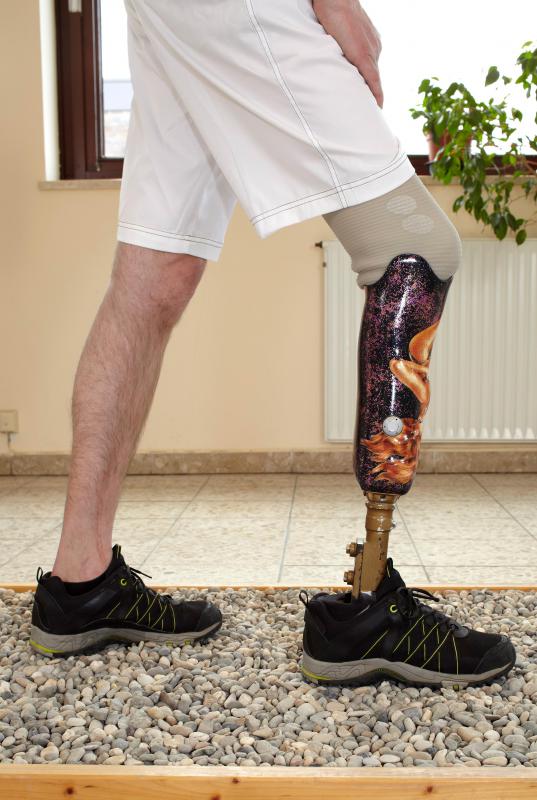At WiseGEEK, we're committed to delivering accurate, trustworthy information. Our expert-authored content is rigorously fact-checked and sourced from credible authorities. Discover how we uphold the highest standards in providing you with reliable knowledge.
What is Spatial Kinematics?
Spatial kinematics is used to describe the movement of an object in three dimensional space. A knee bending at the joint or the movement of a robotic arm are examples of spatial kinematics.
Imagine an arm bending. How would you measure the distance of its movement? Would you measure from the tip of the fingers or the elbow? When an arm bends, parts of it move down, parts of it move up. What direction is it moving? Different parts of the arm are moving at different speeds. How can you measure how fast it moves?

Unlike basic kinematics, which studies the movement of objects along straight lines, spatial kinematics is more complex. In basic kinematics, you only need two fixed points, the start and finish, to describe motion. A car driving a straight road between two cities, for example. With these two points you can measure its speed, velocity, duration of travel and the distance of travel. In spatial kinematics, the movement of an object must be measured from a series of points along the entire range of motion.

By using more than one fixed point, scientists and engineers can break down three dimensional movement into a matrix of one dimensional movements. Those measurements are then plugged into formulas which allow them to scientifically describe how an object moves.
Spatial Kinematics is very important in the field of robotics. In order to program a robot to extend its arm and grab something, many complex formulas come into play. The movement of a robotic arm does not occur on a single straight line. A series of mechanisms must exert a specific amount of force in a specific direction to bring the arm to a certain distance from the robot.
Doctors have also use spatial kinematics to study the movement of humans with prosthetic limbs. In one study, at the Walter Reed Army Medical Center, a patient was covered with light emitting diodes and filmed with a special camera as they walked with a prosthetic leg. The images were fed into a computer and the diodes were used to form a model of the patient's movement. Each diode could represent a fixed point and allowed the doctors to objectively measure how a patient moved with a prosthesis.
AS FEATURED ON:
AS FEATURED ON:












Discuss this Article
Post your comments